
After image experiment (hexagonal)
www.soe.tv
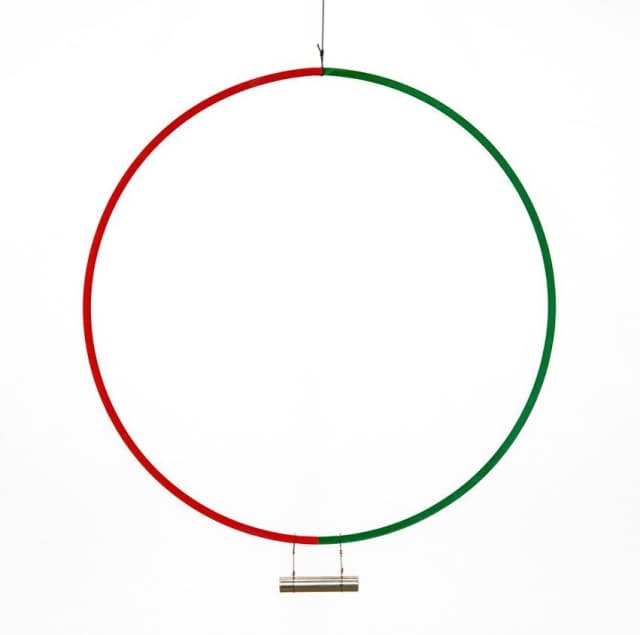
X-ray Documentation of Olafur Eliasson’s artist’s book Your House - A film by SHIMURAbros
www.soe.tv
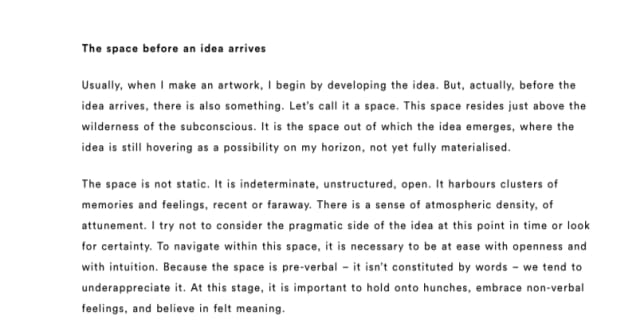
(Click and scroll down for full text)
THE EMERGENCE OF AN ARTWORK
Entry
When you enter the Long Museum, you become part of a process. Just like you, the artworks that you encounter have a past. They’ve come from somewhere; they are on a journey. For a while, you intertwine before taking separate paths. You continue your life; the artworks continue their path.
I’d like to take you back to the time before Nothingness is not nothing at all, before your encounter, to try to describe the process of emergence that an artwork undergoes, from the first hunch to the final artwork, which is, in fact, never final, since on its own it is only ever partially there.
I see an artwork not as a passive object but rather as an experimental setup of sorts, which anticipates the arrival of the visitors, their expectations, dreams, thoughts, and senses. It also communicates with its surroundings, with other objects, and with the conditions that may have an impact on it – these are all agents with which the artwork negotiates; agents that co-determine it. An artwork is really a meeting-up of trajectories. Only at this intersection does the artwork become what it is – with you, with its surroundings, with others.
I have confidence that this process of emergence is relevant not only to artists but wherever creativity is involved, even in everyday life. At the end of the process, you may find an artwork or a building or a great design, or even something you have built in your life, by yourself or with others.
A first step: The space before an idea arrives
Usually, when I make an artwork, I begin by developing the idea. But, actually, before the idea arrives, there is also something. Let’s call it a space. This space resides just above the wilderness of the subconscious. It is the space out of which the idea emerges, where the idea is still hovering as a possibility on my horizon, not yet fully materialised.
The space is not static. It is indeterminate, unstructured, open. It harbours clusters of memories and feelings, recent or faraway. There is a sense of atmospheric density, of attunement. I try not to consider the pragmatic side of the idea at this point in time or look for certainty. To navigate within this space, it is necessary to be at ease with openness and with intuition. Because the space is pre-verbal – it isn’t constituted by words – we tend to underappreciate it. At this stage, it is important to hold onto hunches, embrace non-verbal feelings, and believe in felt meaning.
Another step: Finding words
Progressing from this space of uncertainty, you approach the horizon on which the idea is hovering. The horizon is not actually a line, but a space where the known and the unknown meet, where reality and dreams intertwine. This is a space where negotiations take place, where you realise that reality is relative – that you can change what is real.
This is also where words start to arrive. In thinking about the sculptural or social qualities of light, for instance, or about the effects of different hues, or the reflective qualities of glass spheres and obsidian stone, I try to put words on these qualities and what they do. As the idea emerges, it becomes clear that it is on a journey, too.
Interestingly, reaching the level of words does not entail leaving behind the feeling of the space before words arrive. The cognitive scientist and philosopher Claire Petitmengin, who is also a good friend of mine, puts it like this:
What becomes of the felt meaning once the right words have been found to express it? It does not disappear, leaving its place to words, as if it was finding its accomplishment, and true existence in them. But it becomes more intense, more precise. Expression not only makes it more precise, but makes it evolve, enabling us to discover new aspects of it. The quality of the situation, the problem, the idea or the interior landscape associated with it, undergoes a metamorphosis.1
A series of steps: Sketching and modelling
Having moved through the space before the idea arrives on to the actual idea, I now start sketching. A sketch can be a hand dance, a body movement – anything, really. It is about playing, feeling one’s way, helping the idea to acquire a body.
At this stage, I also work with my studio team to make models – wooden, paper, or mesh models; maquettes that are small enough to fit on a tabletop or structures large enough to walk around or inside of. They can be hastily assembled, 3D-printed, or carefully crafted.
We use the models to study the nuts and bolts of the idea: how light is distributed in a space, whether a particular geometry is exciting or not. But what really makes a model vibrate is its meeting with its surroundings. If there is a specific context for the artwork – say, a public square in Copenhagen or the cavernous spaces of the Long Museum – I also model these in order to envisage the dialogue between the artwork and its surroundings. I imagine visitors and how they will move through a particular space, in order to see the artwork that I am making through their eyes. At this stage, the imagined experiences of future visitors and the projected impact of future surroundings reflect back on the model and the artistic decisions that have been made.
A model is really about testing the embodiment of the idea. Trying out the idea in different arrangements, at different scales, allows me to better understand how the idea touches the world and how it is touched by the world.
Crucial steps: Feasibility studies
This is the getting-down-to-pragmatics moment in the making of any artwork. Can I create the artwork that I have in mind? What are the external conditions, challenges, restrictions? What do I need to do to erect waterfalls along the shorelines of New York City or to send a star-like light into the night sky above Stockholm?
In this phase, technical challenges abound, but it is important not to leave the realm of art-making; every practical question needs an artistic answer. If the artistic vision is lost, feasibility studies become pointless.
At my studio, we work our way through strings of questions, matching ideas and models with reality, rubbing the experimental material against what is doable. We consult engineers, city governments, urban planners, craftsmen, and other specialists. Sometimes what is feasible is negotiable; the impossible can be made possible. At other times, the laws of nature or economic restraints remain challenges and may require me to rethink the approach to keep the project in line with the artistic vision. The site for the artwork, if specific, may also present obstacles. Will wind conditions make it difficult to send a large balloon up into the air night after night? Can a city square support the weight of eighty tonnes of ice? Will aquatic life be left intact if I do a large-scale waterfall in a river? You have to embrace these obstacles.
And a leap: My work becomes your work
Finally we arrive at the moment of sharing. The artwork leaves my studio and makes its way out into the world. It is open for interpretation, and this involves a lot of unpredictability. At the Long Museum, for instance, my works dialogue with the architecture and with the visitors in a way that may or may not be close to what I had imagined, and that may or may not be close to what they would do in a museum in, say, Berlin. The transformations that take place may be such that I do not see them or understand their full potential.
The artwork belongs as much to the person who meets it as it does to me. It belongs to you; it takes shape in your presence. Just like a building, an artwork is, essentially, a relationship. It is reality-producing. It has no end.
Exit
Obviously the emergence of an artwork may be different from the processes of planning a social event, building a kindergarten, or writing an article. These projects entail other challenges, other territories to be explored, than the ones I work with. Nonetheless, I imagine that these processes may be similar to the process of making an artwork. The intuitive gravitation towards a particular subject, the sense of doubt and feeling of uncertainty, the experimentation – these apply across a wide field of activities. I find it really worthwhile to trust the moment of encountering an artwork, a building, another person or situation, something or someone foreign or familiar, and to be open to what that encounter holds by way of potential. This is no simple act of consumption – it is hard work. Inspiring work.
Note:
1 Claire Petitmengin, ‘Towards the Source of Thoughts: The Gestural and Transmodal Dimension of Lived Experience’, in Journal of Consciousness Studies 14, no. 3 (2007), p. 74.
Giving climate change a shape helps us to understand it emotionally, turning abstract data into a felt feeling. Great work by Antti Lipponen.
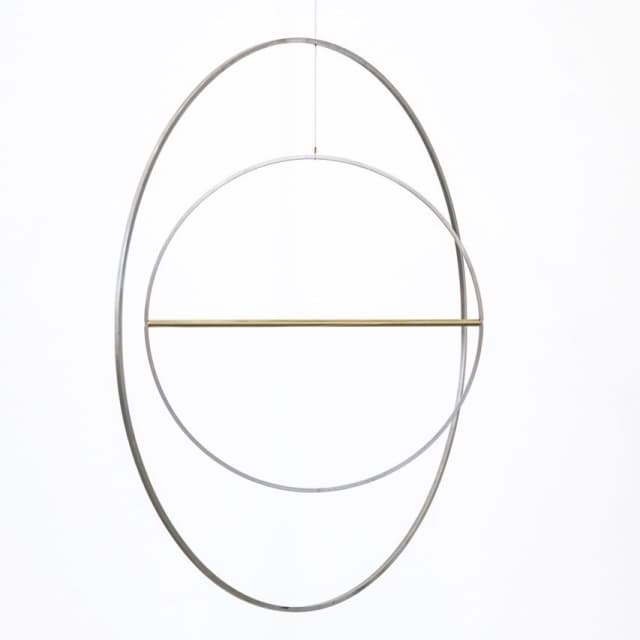
Studio Olafur Eliasson – Open House is the seventh volume in the studio’s TYT [Take Your Time] series. The book includes conversations with members of the studio team, texts by new and long-term friends and affiliates of the studio – including neuroscientists, economists, social scientists, curators, playwrights, philosophers, psychologists, and climate scientists – and excerpts from texts and books that inspire the studio’s current research.
Get your copy here: www.buchhandlung-walther-koenig.de/
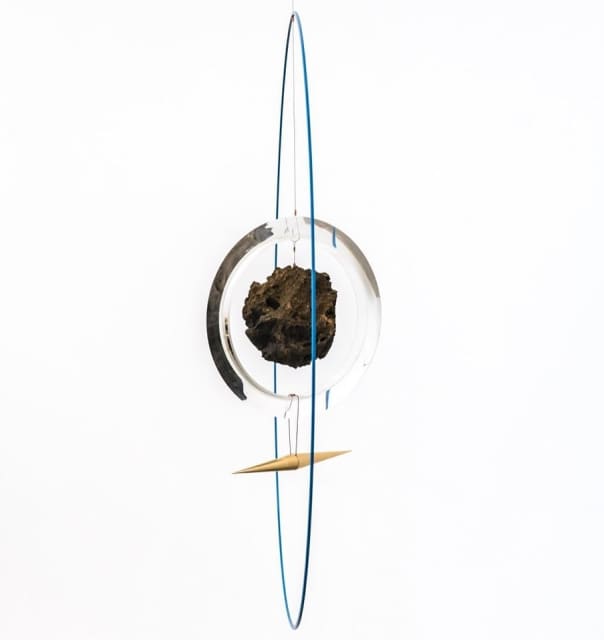
Compasses in process. Recalibrating the senses, solo-exhibition at Foundation De 11 Lijnen, Belgium. Opens August 11
www.soe.tv
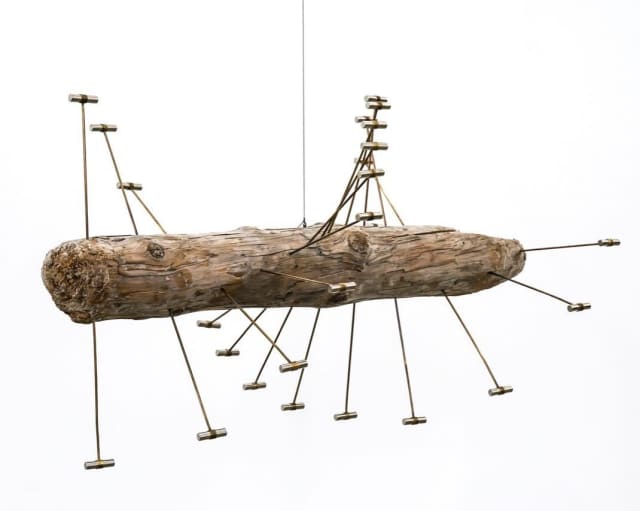
On 5 August 2017, 20:00 the series will continue with a concert night at Akademie der Künste, Berlin - get your ticket here. The collaboration 'A-B-A-B-A : from here to hear - evolved as a series of workshops and poetry events in Addis Ababa and Berlin starting in 2012. These series of events are part of the project Acting Archives initiated by the Institut für Raumexperimente (Institute for Spatial Experiments), Berlin University of the Arts, together with the Ale School of Fine Art and Design, Addis Ababa University. www.raumexperimente.net/en/
www.soe.tv
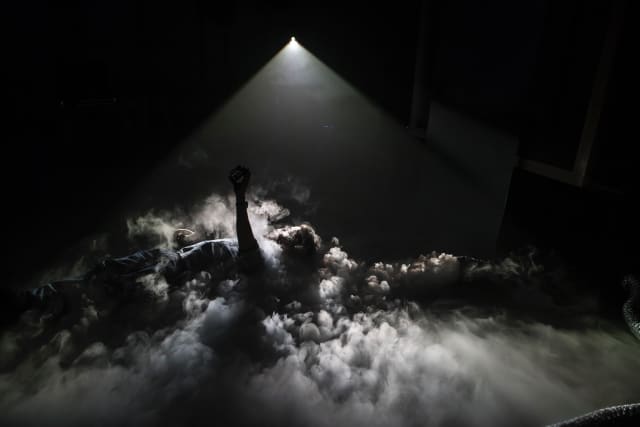
#fog #test #studio
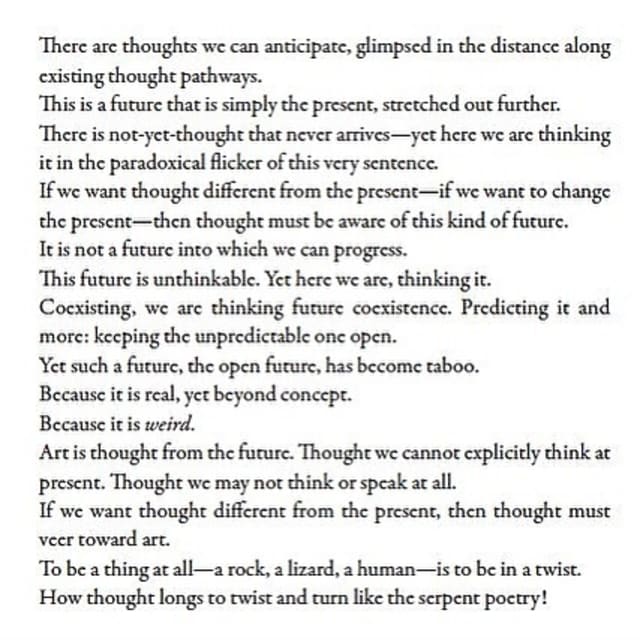
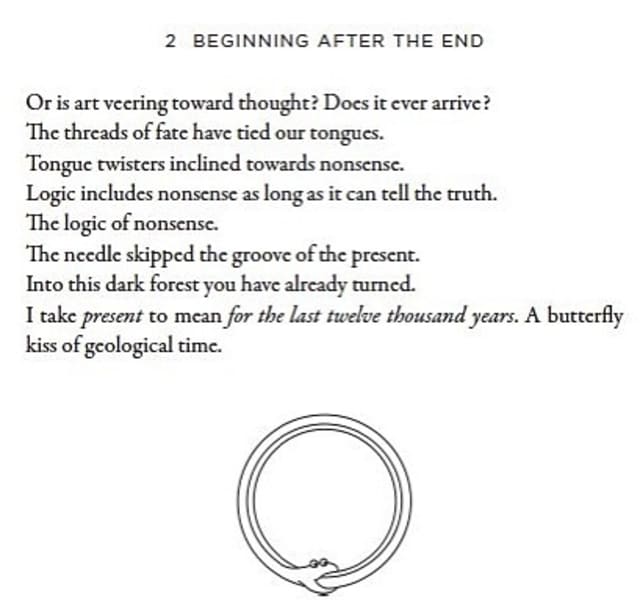
Serpent poetry ~ Tim Morton, Dark Ecology.
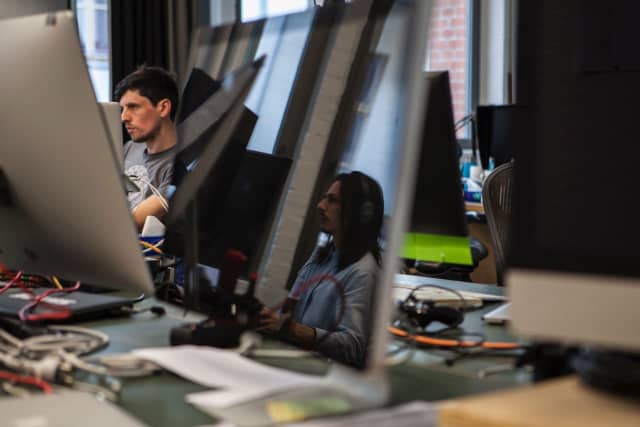
Job opportunity at the studio: Digital content producer - read more about it here
Movements Are Facts: A film by Natascha Mendonca
The 5 years of the Institut für Raumexperimente seen through its archive footage
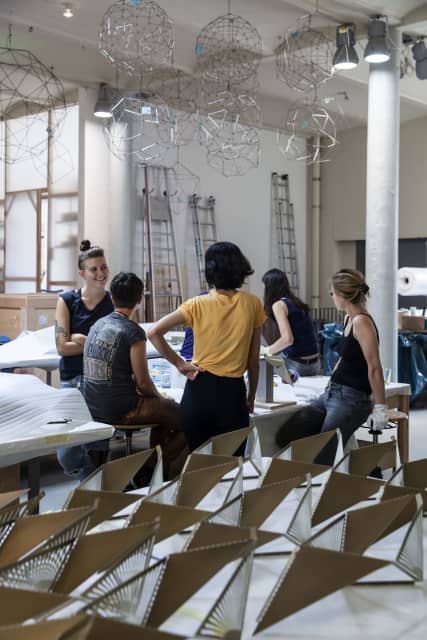
Chasing the Light - a film by SHIMURAbros
www.soe.tv
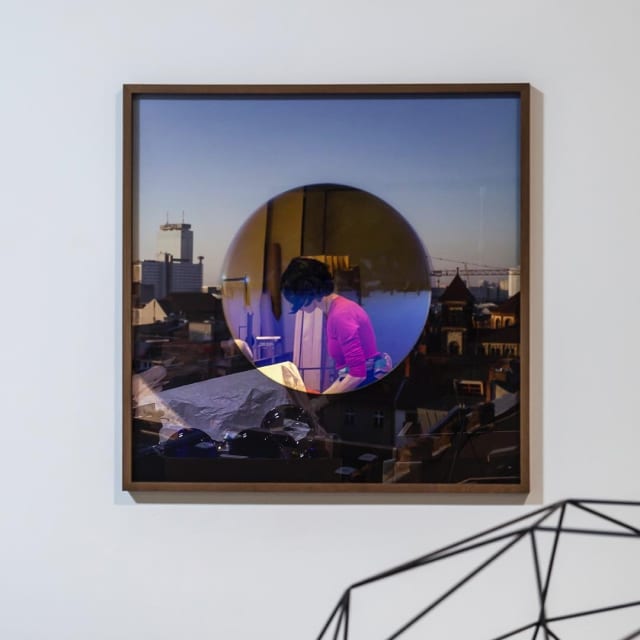

We are very proud to present our new book: Open House - a publication that looks at artistic processes within the studio and the studio's exchanges with the broader world
Get your copy here: www.buchhandlung-walther-koenig.de/
Stone floor (untitled), Leeum, Seoul, 2017. A film by SHIMURAbros
www.soe.tv
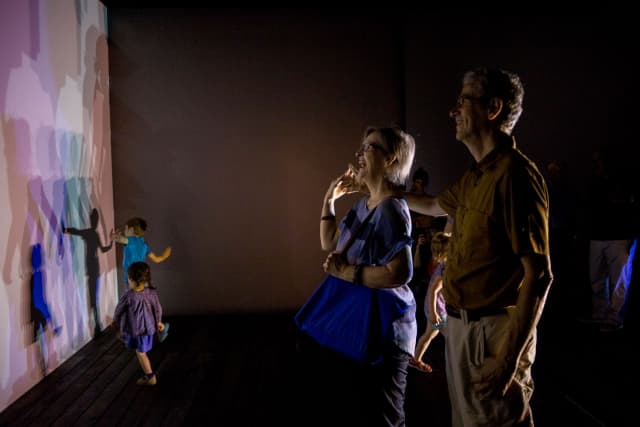
Your multiple shadow house, MAC, Montreal, 2017
Excerpt from The Art Newspaper editor, Javier Pez's article on Green Light
Called Green light, the project was launched by Studio Olafur Eliasson and partners in Vienna last year. Venice is the art workshop’s most high-profile venue so far.
For some the context is very wrong. “I felt sickened by this human zoo,” wrote Jackie Wullschläger, the art critic of the Financial Times. Cristina Ruiz, a former editor of The Art Newspaper and another Venice Biennale veteran, was also unimpressed: “Let people interested in the project seek it out. Let the others gawp at something else. This is not art in service of migrants but migrants in service of a curatorial vision.”
. . .
But Green light feels different. It would have been diminished if it was a sideshow at the Biennale: art and activism as an add-on. It feels like a project designed and evolving to meet migrants’ real needs and encourage conversations. You need only speak to the migrants themselves to hear their thoughts and life stories (and critics of the project have so far failed to include the participant’s voices in their critiques).
One participant, Tahajud Alghrabi, a teacher from Baghdad who joined the project in Vienna, is now helping other refugees in Venice. During the preview week one young man from Nigeria, Jerry Angel, said frankly that if he wasn’t taking part in Green light he would probably be hanging out at a railway station drinking or possibly selling drugs.
Read full article on The Art Newspaper